Decoding HAL CATS Program
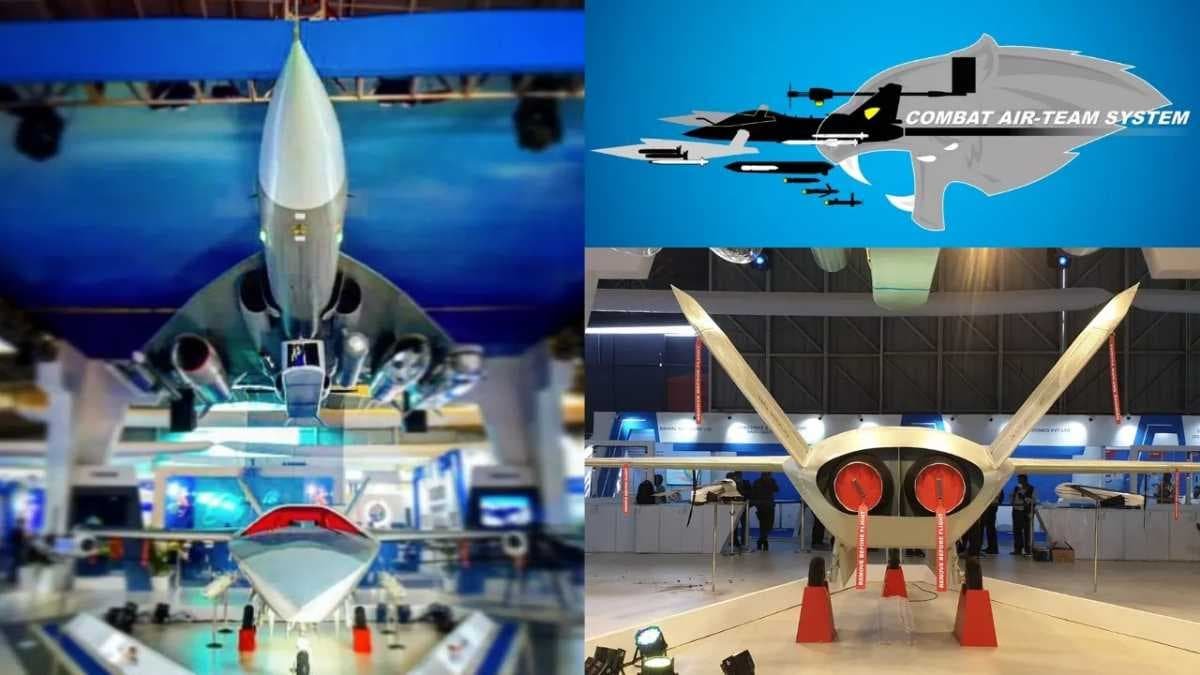
In Aero India 2021, Hindustan Aeronautics Limited (HAL) demonstrated many of its ongoing and upcoming programs. One of these programs won attention and appreciation from the entire defence and aerospace sector. This was the Combat Air Teaming System i.e. HAL CATS program.
In this article, we will try to understand HAL CATS program in detail. We will discuss about the components of this system and their specifications and features. We will try to analyse their possible performances and benefits in upcoming aerial warfare. Also we shall discuss possible timeline of the program with help of some latest updates.
HAL CATS: Introduction
Combat Air Teaming System (CATS) is an advanced futuristic air warfare system. It is being developed by HAL in collaboration with New space Research and Technologies, which is a new start-up. One might remember it is the same start-up that has developed swarm drones for Indian Army. These were demonstrated Army day parade this year.
Working Of The HAL CATS Program-
CATS will be an integrated systems consisting various manned and unmanned platform. In this system, a manned fighter aircraft, most probably Tejas will be used. It will be accompanied by many UCAVs. These UCAVs will act like wingman to the fighter aircraft and the aircraft will function as a mother-ship to the drones. They will protect aircraft from enemy attack. Also they can engage into combat as per the instructions of the pilot of mother-ship.
Apart from these, there will be cruise missiles and drone swarm carriers mounted on fighter aircraft. Also there will be a high tech pseudo satellite for surveillance and coordination.
Components Of The HAL CATS Program-
It will have 4 major components. Let’s try to understand them one by one.
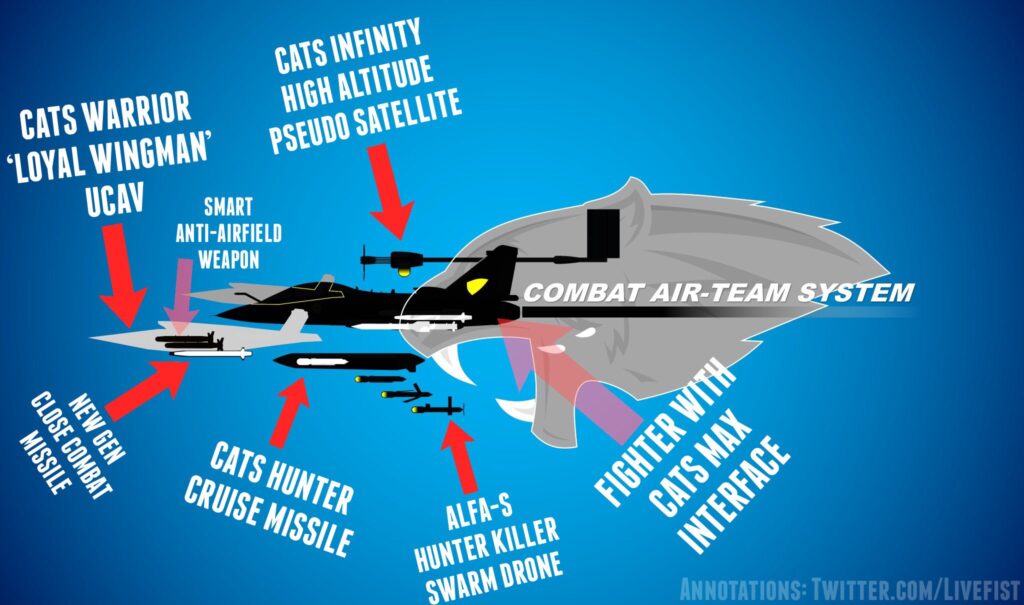
1. “CATS Warrior” Wingman Drone-
CATS Warrior will be an unmanned aerial combat vehicle (UCAV). As discussed above, they will accompany the fighter jet on its mission. These drones are “low observable” to enemy radars and air defence systems due to their stealth features. They will be controlled by the mother-ship i.e. the fighter aircraft.
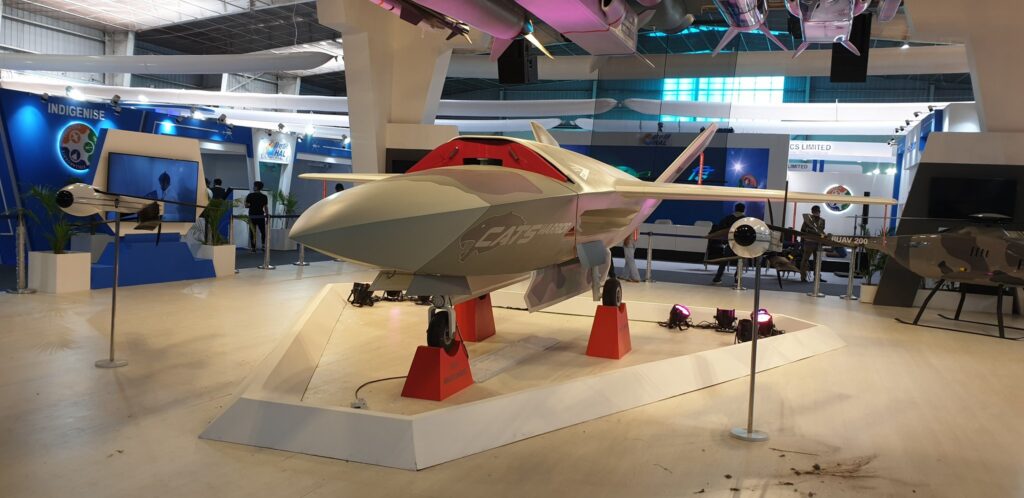
Specifications And Performance Parameters (expected)-
- Cruise speed- 0.7 mach i.e. around 860 km/hr.
- Maximum speed- more than 0.8 mach
- Range- 800 km
- Endurance- 80 min
- Maximum takeoff weight- 1300 kg
- Payload capacity- 250 kg (can be increased in future)
Weapon Package Of Warrior Wingman-
Recent images of Wingman model from Aero India 2021, gave important insights about this.
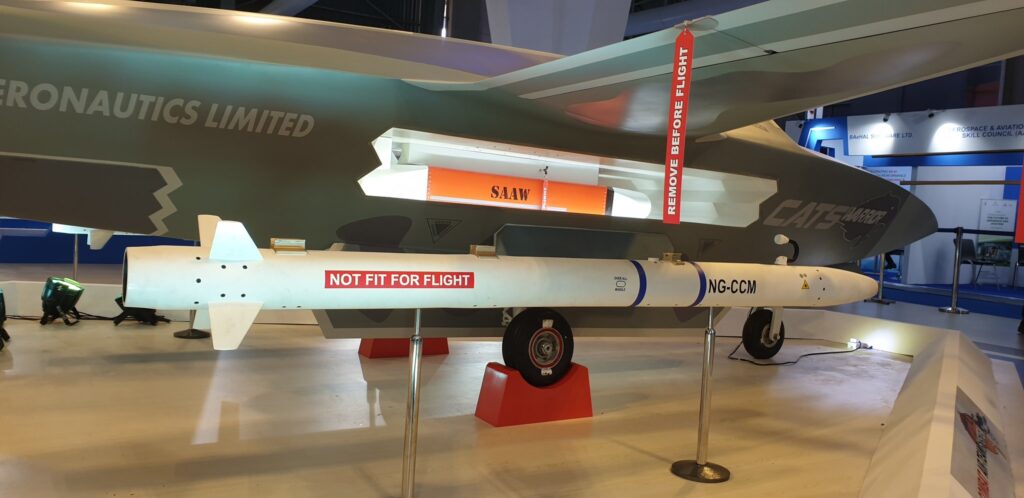
- It will carry at least 2 Smart Anti-Airfield Weapons (SAAW). They will perform ground attack role. They will be kept in an internal weapon bay of the drone.
- NG CCM (Next generation Close Combat Missile)- this will be an advanced version of short range air-to-air missiles. It will do self-protection role. This is developed by MBDA and assembled by Bharat Electronics Limited (BEL). It will replace current Russian missiles like R-73.
Benefits Of Warrior Wingman-
- This system will act as a team. Thus it is an ideal system to attack a heavily defended airspace.
- Low cost- Even if some drones are lost they will cause very little loss in terms of cost if compared to fighter aircraft. Also the invaluable lives of our pilots can be saved.
- Due to stealthy features, these are difficult to detect and kill.
2. CATS Hunter-
There is some ambiguity about exact nature of this system in HAL CATS program. As per the models it’s highly likely that it will be a cruise missile. There is a slight possibility that it may be a drone carrier. We have to wait for more updates on this.
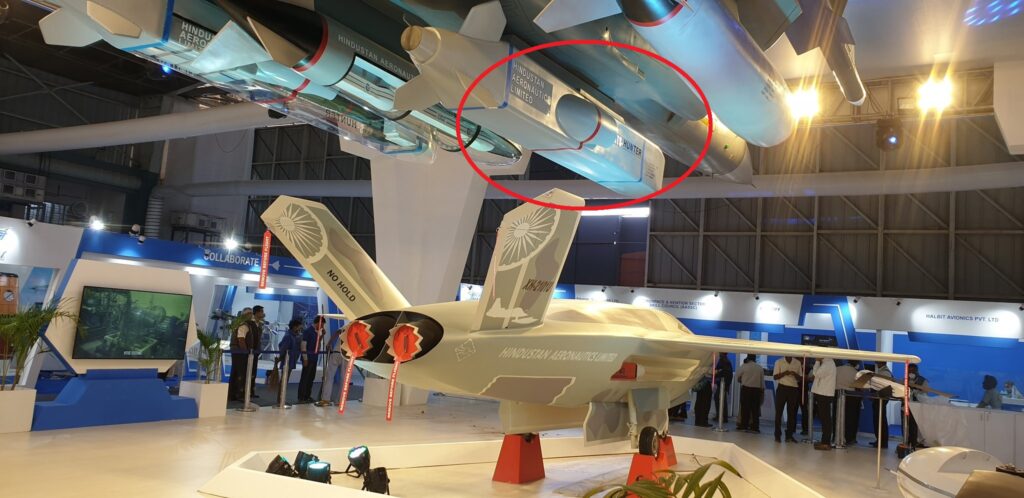
But as per current information, it will be an Air Launched Low Observable High Precision Cruise missile. It will be mounted on the mothership. Thus it will be a new indigenous air-to-surface Cruise missile. It will perform similar role that of the SCALP missile which is already integrated in Rafael fighters of IAF. It will use advanced navigation technology.
Specifications Of The Hunter-
- Range- 200+ km
- Weight- 600+ kg
- Warhead- 250 kg
Role of Hunter will be to attack both Land and Maritime targets. It can be integrated in various fighters of IAF like LCA Tejas, Mirage-2000, Su-30 etc. In future it may be integrated in upcoming fighters like MWF, TEDBF and AMCA.
One may think why we are developing new cruise missile in HAL CATS despite having Brahmos? The reason is that Hunter will be much more stealthy that the Brahmos.
3. ALFA-S Swarm Drones-
This will be a unique feature of HAL CATS program. There will be carrier pod. It will be mounted on the mother-ship. Each pod will carry 4 drones.
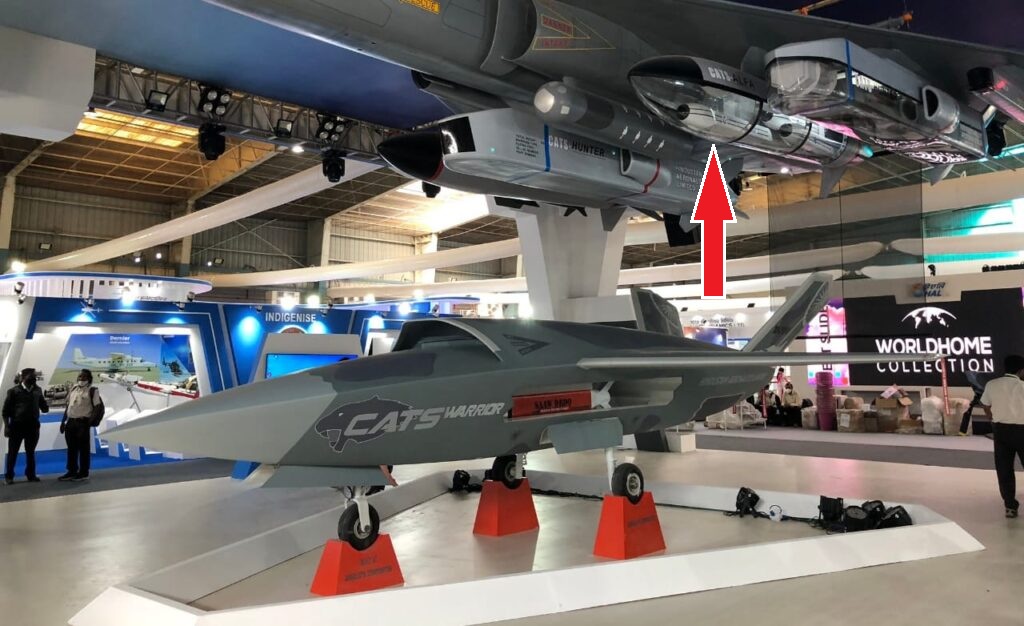
Working-
The fighter aircraft will release the carrier pod. Carrier itself has range of 100 km. After travelling on its own, it can release swarm of 4 drones. These drones can perform both air-to-ground and Air-to-air combat. They can also protect the formation from attack of enemy air defence systems. LCA Tejas can carry 3 pods (12 drones) like this while Su-30 can carry 4 (16 drones). This number shall be increased further.
Unique thing about this system is that no country in the world is yet working on such a system. India can become the first country to develop such a futuristic technology.
4. Infinity Pseudo Satellite-

It will be an Ultra High Altitude Solar Powered Pseudo Satellite. It can fly to the height of around 20000 ft i.e. in stratosphere. This pseudo satellite will have endurance of 90 days. Thus it can fill the gap in surveillance system between satellites and the UAVs.
This pseudo satellite will be equipped with advanced sensors and synthetic aperture radar. Its role in HAL CATS program will be to keep track of targets in enemy territory and to coordinate mission of the CATS Warrior.
It will have significant benefits due to its low cost. This pseudo satellite can also be used to facilitate 4G and 5G services in the remote areas. Thus it can enhance communication systems of armed forces along with civilian use.
Potential Benefits Of HAL CATS Program-
The major reason due to which India is developing such system is the limited resources. But apart from augmenting limited resources, the program shall cause many benefits like-
- Support the low squadron strength of IAF– IAF is currently operating just 30 squadrons of combat aircraft against sanctioned strength of 42 squadrons. HAL CATS program can fill this gap as wingman drones will play role of an aircraft itself.
- Saving cost– as per reports, CATS Warrior wingman will cost less than 5 million dollars i.e. around 37 crore rupees. It is much lesser than a fighter aircraft.
- Saving lives of pilots– Manned aircrafts can perform Balakot like strike missions without entering the enemy airspace.
- India can become leader in the technology– No other country is working on such an integrated program. Boeing company of US is working on a wingman drone. China has also tested its UCAV. But they are still in development stage. Also no country is working on concept like ALFA-S swarm drones. India can take a lead by developing such system first.
- Boost export market for Indian platform– Other friendly countries may be interested in importing this system from India. This can help in achieving target of $ 35 mn defence exports set up by Government of India.
Recent Updates-
- Director, Engineering, Research and Development, HAL said that the company is working on the program using 400 crore Rupees from its internal funds.
- The HAL CATS program is expected to be ready by 2025.
- Recently a senior officer told that this system was secretly tested at Pokhran ranges in 2017 before senior officials of IAF. They were impressed by its performance.
Conclusion-
There is no doubt that once developed, HAL CATS program will change the very nature of air warfare. Apart from adding extra muscle to the firepower of IAF, it will also help Indian defence and aerospace industry to achieve global competitiveness. Successful participation of a private sector company will help create robust aerospace ecosystem in India.
We wish all the best to HAL and Newspace Research and Technologies for this program.





